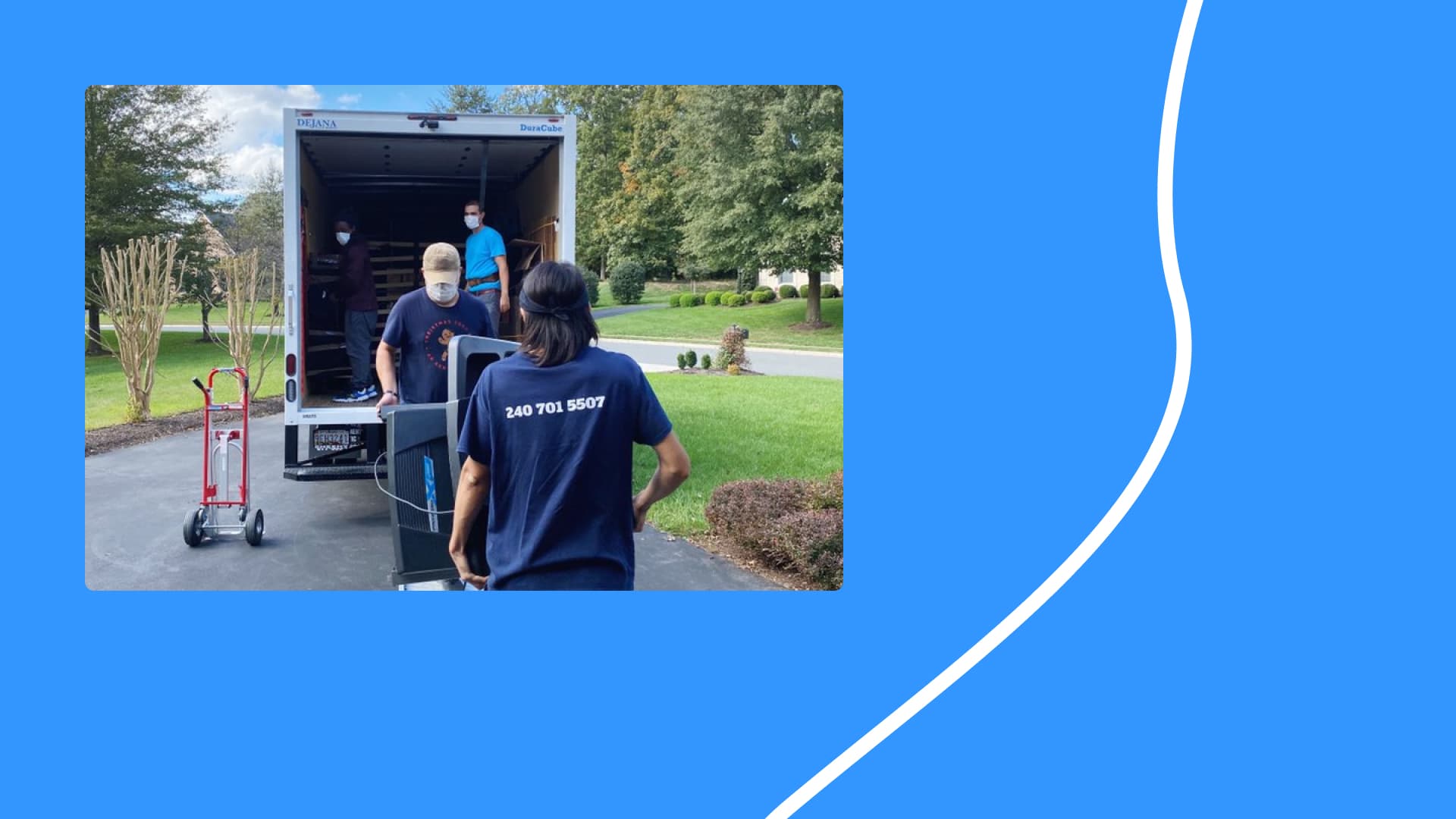Knowing about how to move efficiently and how to prepare for movers will help you save time, cut costs and make the move easier and faster.
1. Secure a Parking Space for the Moving Truck
If your departure and arrival locations require a moving truck parking space (for example, your apartment is found on a narrow street), getting a truck parking space is an important step of the move.
A truck parking space will allow the movers to park close to your home. This will not only make their job easier, but it will also make it faster. Since you are most likely moving at an hourly rate, this can greatly reduce the amount of time they work and you will end up paying less.
It can be difficult to reserve a space in busy areas. You may have to get permits, get signs from the police department, and so on. Type in “getting a truck parking space in ‘your city’” in a search engine. Often you will see an official website with all the necessary instructions.
📌 Related article by AT Movers: How to Reserve Street Parking for Moving in DC
2. Declutter Before the Movers Arrive
Decluttering in order will not only speed up your move, it will also make it cheaper. Less stuff to pack and move – less packing costs and less work for the movers. Fewer boxes – more oxygen!
Walk through every room. Decide what to keep, what to donate, what to pick out, or what you can try to sell. Start this process well in advance. At least a month before the move. Doing a good cleaning at the last minute is fraught with many mistakes.
📌 Related article by AT Movers: Decluttering Before Moving
3. Label Boxes Clearly
Labeling boxes is very important. Trust me, you don’t want to ignore it. Even 5 boxes can be confusing. And if there are more? What’s more, the movers need it too. This way they will know where to place the boxes!
Use a simple labeling system:
- Name of the room.
- The contents of the box.
You don’t need anything else.
Here’s a quick list of useful labeling tips:
- Label boxes on multiple sides, not just the top.
- Use a bold, dark marker for easy readability.
- Assign a color to each room (e.g., blue for kitchen, red for bedroom).
- Write “FRAGILE” on boxes with breakable items.
4. Prepare a List of Items Movers Won’t Move
There are some items that movers will not transport due to safety concerns or legal restrictions. First of all, we are talking about hazardous materials: chemicals, flammable items, gas cylinders.
The movers also do not transport perishable products, plants.
Pets are also not transported by movers almost always!
Hazardous materials are better disposed of in front of the movers in accordance with all regulations. Perishables, plants and animals can be transported in your own car or find specialized organizations.
📌 Related article by AT Movers: What Movers Won’t Move
5. Make an Inventory List
An inventory will help protect your belongings. Make a list of things. If it’s hard to make a list for all of your belongings, make a list of expensive items. Take pictures of them and document their condition this way. In case of damage, you will be able to prove to the movers their original condition (but remember that most movers with basic insurance are not responsible for items that were packed by you and if they were damaged during the trip (but not loading and unloading).
To make the process easier, make a room-by-room list. Include important items and attach pictures to each item.
6. Pack an Essentials Box
Packing an essentials box is a crucial part of any move. This box should contain items you’ll need immediately after the move, like toiletries, medications, important documents, and a change of clothes.
One item many people forget is a pair of scissors. You’ll need them to open boxes quickly once you arrive. Packing scissors ensures that you’re not left searching for a way to get into your boxes after a long day of moving.
Here’s a quick list of essentials to include:
| Essentials | Purpose |
|---|---|
| Scissors | To open boxes after the move |
| Toiletries | For basic hygiene right after moving |
| Medications | In case you need them immediately |
| Important Documents | For any important references or access |
| Change of Clothes | To stay comfortable after the move |
| Chargers (phone, laptop) | To keep your devices powered |
| Snacks and Water | For quick energy during unpacking |
7. Protect Fragile Items
When packing fragile items like glassware and electronics, take extra care to ensure they are well-protected during the move. Wrap each item in bubble wrap or packing paper, and place them in sturdy boxes. Be sure to fill any gaps in the box with padding, like packing peanuts or towels, to prevent items from shifting.
Here are some useful tips to protect your fragile items:
- Use double-walled boxes for added protection.
- Pack heavier items at the bottom of the box and lighter ones on top.
- Use dish packs for glassware and dishes, as they are designed for fragile items.
- Tape the boxes securely with heavy-duty packing tape.
Always label these boxes as “Fragile” so movers know to handle them with extra care.
📌 Related article by AT Movers: Your Essential Packing Guide to Preparing for AT Movers
8. Have Cash Ready for Tips
It’s customary to tip movers for their hard work, so having cash ready ahead of time will make the process smoother. Most people tip based on the overall cost of the move or the amount of effort required. As a general guideline, consider tipping $4-5 per mover per hour, or around 15-20% of the total moving cost.
Prepare the cash in envelopes, labeled for each mover. This keeps everything organized and ensures you’re ready when the job is done.
📌 Related article by AT Movers: How Much to Tip Movers in DC
9. Handle Utilities and Notifications
Before your move, it’s important to notify utility companies, banks, and insurance providers about your change of address. This ensures your services are transferred and no interruptions occur after the move. If you’re renting, be sure to separate any items that belong to the landlord or homeowner, so they don’t get packed by mistake.
Make a list of all the services and companies you need to inform and start contacting them a few weeks in advance to avoid any last-minute issues.
📌 Related article by AT Movers: Moving Checklist – You can also download this checklist to make your move smoother.
Preparing for your movers makes the entire process smoother and faster, helping you save time and money. By following these tips, you’ll ensure a more efficient and stress-free moving day.


